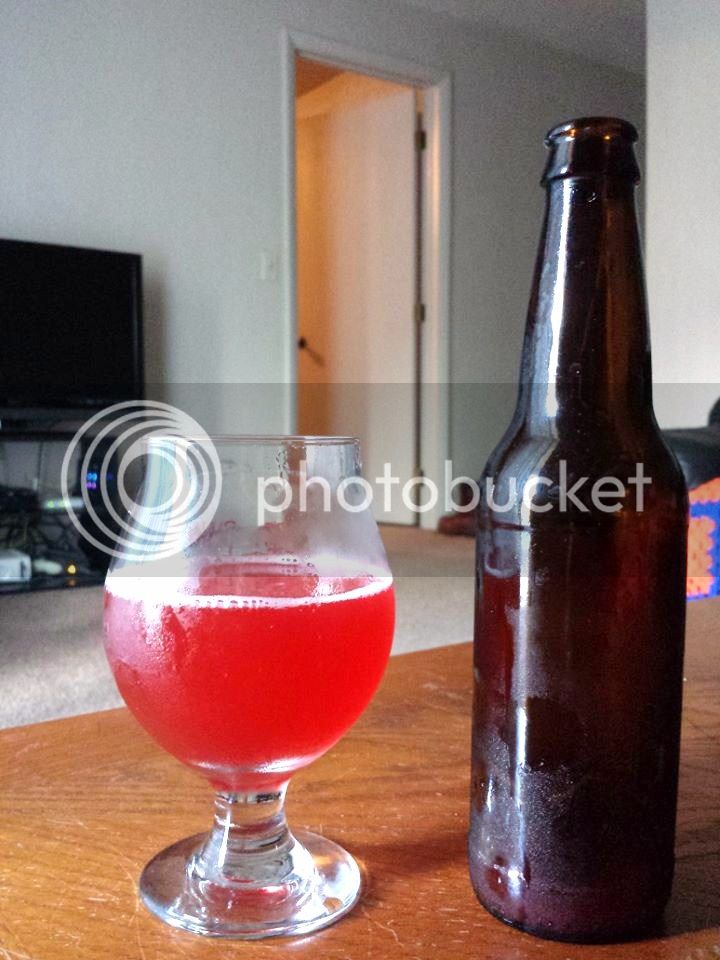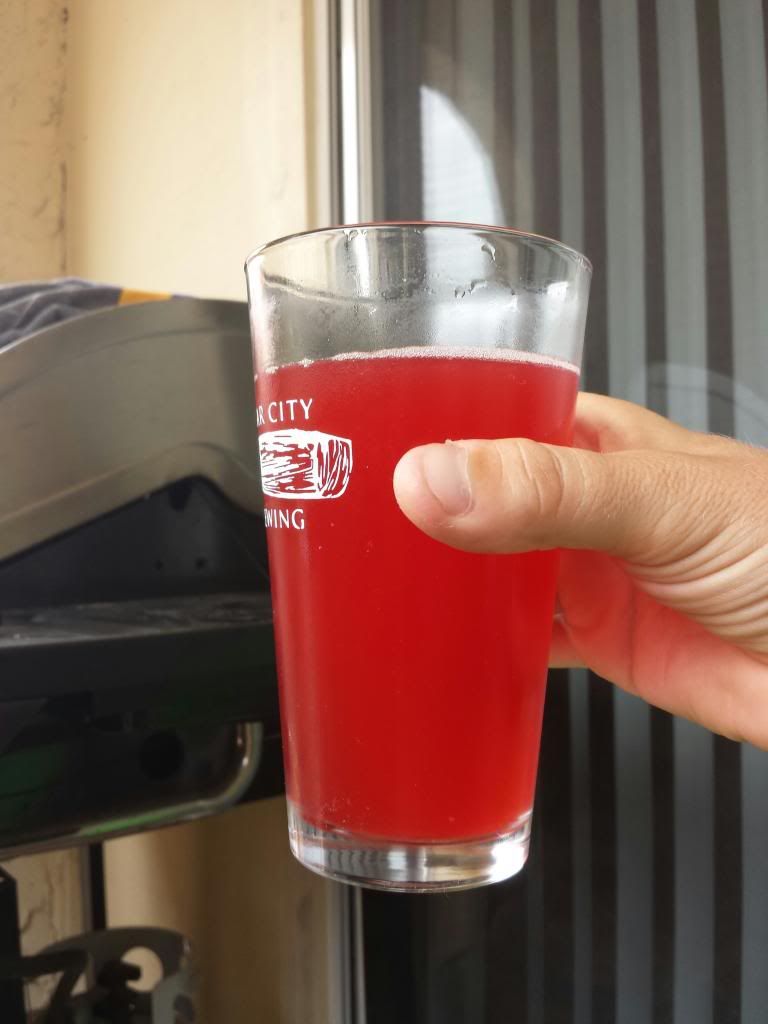After seeking advice from you guys, I decided to jump forward with a berliner. First off, thanks for the help! I have never brewed the style and have only had a few commercial beers of the style, but what could it hurt? Its 90*+ in Florida and this would make a perfect pool side beer.
My attempt was towards a Florida Weisse (sorry for those of you who dont like the term), much like what J Wakefield is pushing. Huge fruit additions into a base berliner recipe. I am still an extract brewer so I went with a sour wort approach. We'll call the final beer was a Pom Razz Berliner Weisse.
Steps:
-Heated 3 gal water to safe temps and added 3lb wheat DME and 1lb pilsner DME
-Dropped the temp to around 110 and pitched a cup or so of uncrushed 2-row into the wort
-Lay a sheet of syran wrap directly over the wort and "glue" the sides of the syran to the side of the kettle. This will prevent oxygen from getting in. Also purged with a blanket of CO2 into the headspace of the kettle and then covered the top of the kettle with another layer of syran.
-Put the kettle in the oven with the oven light on. Also wrapped in a couple towels. Used my bbq thermometer to monitor temps. This technique held the temp at average 106-108* for several days. No need to turn on the oven. It also kept the fiance from getting on me about the smell, as the oven contained it well (except when the door was opened)
-After two waiting two days, I sampled the wort two times a day. I (believe) I let it ride of a total of 4 days. I had to keep in mind that I would be topping off with 2 gals of water, but at the same time I had to keep in mind that the sugars in the wort were masking the true potential level of sour. Over the days I got a delicious creamed corn smell that reminded me of Thanksgiving corn casserole. It started to turn a little more towards creamed corn + garbage towards day 3 though, haha. I wasnt getting any of the terrible aromas (baby poop) I was warned about, so I was happy.
-Boiled the soured wort 15 min to kill the lacto off. Added 1oz of Hallertauer hops to the boil. I had concerns, as after the boil it had some creamed corn smell. This however went away during fermentation.
-Topped off wort with 2 gal water, cooled to 67*, and pitched US-05. Let it ride for 2 weeks.
-At week 2, added 5 lb raspberry and 16 fl oz POM juice (raspberries were frozen raspberries that I pureed and then refroze with the POM juice until ready to use) into a mesh bag.
My opinion: One of the best beer I have made. Friends cant get enough of it. Its certainly different and not for everyone though. Beautiful color. Light, crisp, refreshing. Has some lactic funk on the nose, which transitions to more of a pleasant dirty raspberry aroma as it warms. It has moderate tartness. I wouldnt mind if it had just a bit more pucker. The raspberries shine nicely in the beer, but its not crazy fruity. Things I would do different next time: let the sour wort ride a little bit longer, and add more fruit to bring out that raspberry character, and add more carbonation (I was limited to what I thought my bottles could handle...3.4 volumes, which is high but I felt it could use a little more carb).
Cheers!










![Craft A Brew - Safale S-04 Dry Yeast - Fermentis - English Ale Dry Yeast - For English and American Ales and Hard Apple Ciders - Ingredients for Home Brewing - Beer Making Supplies - [1 Pack]](https://m.media-amazon.com/images/I/41fVGNh6JfL._SL500_.jpg)

















































